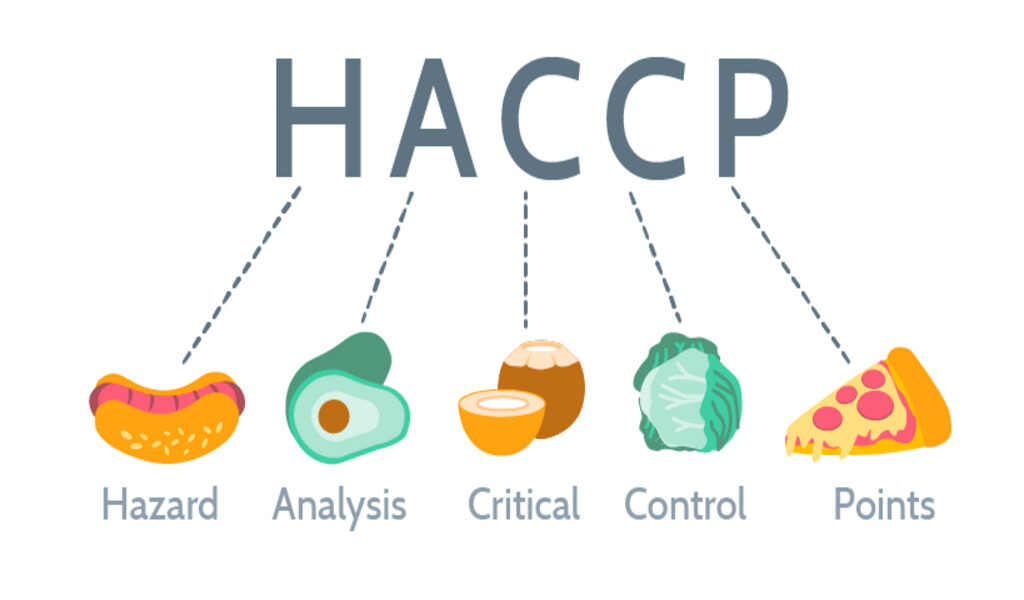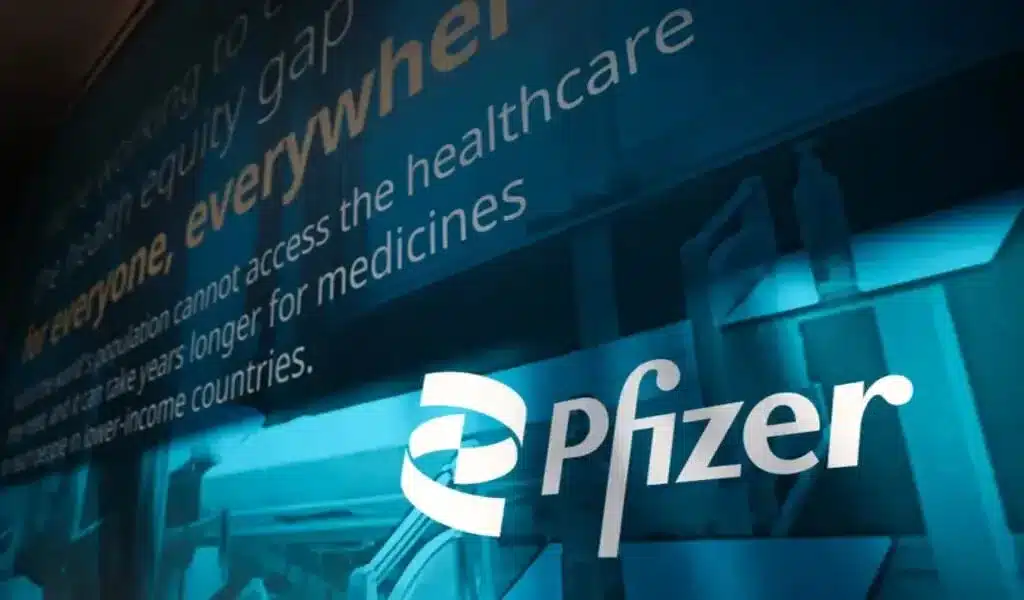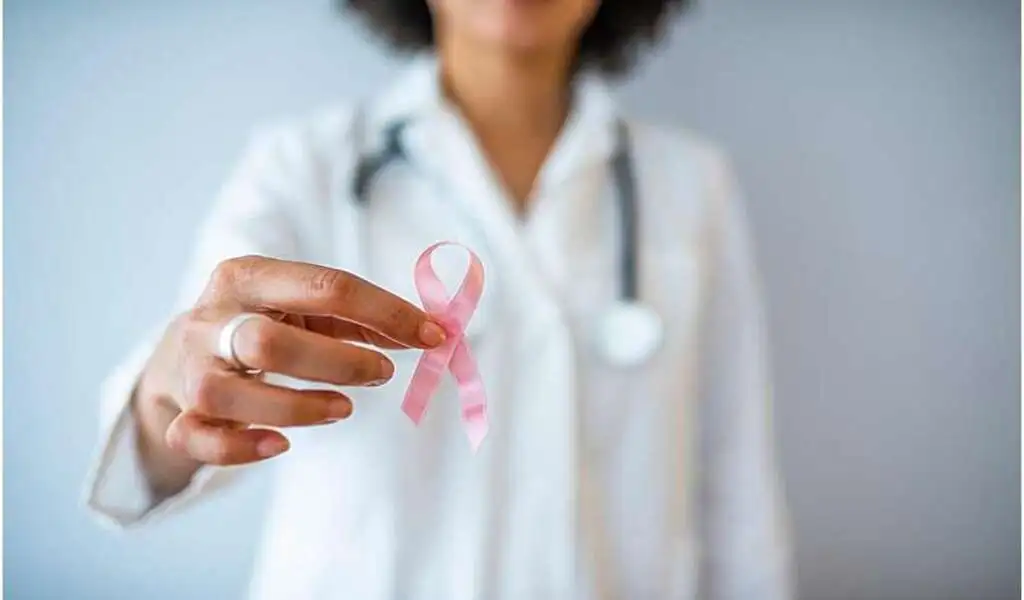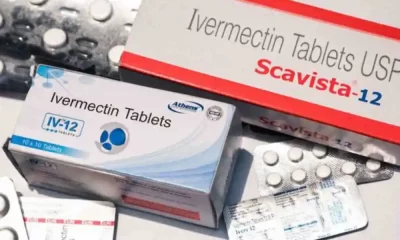Health
HACCP Model For Beef Slaughter: Quick Guide For Food Manufacturers

The US Food and Drug Administration (USDA) Food Safety and Inspection Service (FSIS) recently updated its HACCP (Hazard Analysis and Critical Control Point) model concerning beef slaughter. The previous model dates back to 1996 and the newly updated version is expected to be used as the foundation for a slaughter plan for other types of livestock. This comes on the heels of the FSIS’s new Sanitation Standard Operating Procedures (SSOP) guide.
HACCP Updates Are Ongoing
Part of the HACCP plan is to continually release guideline updates. In the past few months, the FSIS has announced four revisions to guidance models intended to assist in the meat and poultry industry. These new guides and generic models cover topics including raw ground beef, beef jerky, bacon, and pork slaughter, which are released to keep processors up-to-date on regulations. The regulations contained in the updates are designed to help processors produce safe, wholesome food products for consumers. 2021 happens to be the 25th anniversary of the first set of HACCP regulations implemented by the USDA. It began with concerns over the processing and handling of seafood and has continued to include other animal food products.
Also Read: Massage Parlor, Spa May Double as Quarantine for Foreign Tourists
Poultry And Meat Guides Have Also Been Updated
The HACCP models and guidance for poultry and meat have also undergone a recent update. They now include more science-based references along with a product description, production flow diagram, hazard analysis, ingredients list, and HACCP plans.
The food safety plans designed by the HACCP first went in place to address an outbreak of E. coli O157:H7 in 1993 that spanned four states and resulted in 4 deaths, 170 hospitalizations, and 700 foodborne illnesses. The source was traced to a fast-food restaurant in Washington State. The incident prompted a complete overhaul of the process used to inspect meat and poultry in the US, Canada, and other countries.
The Changes in Food Inspection
Kerri Gehring, Ph.D., professor of animal science at Texas A&M University, and president and chief executive officer of the International HACCP Alliance says, “HACCP actually began being used by seafood before meat and poultry.” He states that before the mandatory use of HCAAP occurred, inspectors examined meat and poultry through sight, smell, and touch. In other words, potential hazards were identified at one time just through the simple task of poking and sniffing the food product in question. While that may have been sufficient at one point, it was not an effective way to detect major food safety threats that exist today. Since these threats are now mostly microbiological, the inspection system had to change from a command and control method to something more thorough.
The Major Changes Made By HACCP
Food inspectors still have a great deal of power in their positions. Their roles continue to be vital in the food inspection safety chain. Inspectors have much to say about how tasks are performed in a food processing plant. But two key changes that resulted from the HACCP have greatly improved the relationship between inspectors and facilities. First, the guide changed how food safety inspections are conducted. Second, it gave food processing plants responsibility for creating their own HACCP food safety plans. Before HACCP, food processors turned to food inspectors for direction. This change puts the onus on the food industry to become accountable within itself.
At First, HACCP Was Not Considered Effective
The global head of food safety for JBS, and former Administrator of the USDA’s Food Safety and Inspection Service, Al Almanza, says the initial reaction of food experts to the HACCP was that it would not provide a strong enough safety system for use in the food industry. “Critics said it was designed for NASA and the auto industry, not for food safety.” He added, “They didn’t see the relevance of HACCP in regulating meat and poultry which, as you know, is a heavily regulated industry. Or that HACCP could help meat and poultry plants to produce food products more safely.” Almanza goes on to state, “But was there anything better to improve poultry and meat slaughter and product safety? No. It has streamlined the whole approach to inspection for FSIS and industry – how they communicate with each other, the expectations of meat and poultry plants and inspectors – and HACCP set up a prescribed way of doing things.”
Also Read: Casey DeSantis, First Lady of Florida diagnosed with breast cancer
HACCP Has Been Tough On Small Producers
According to Chris Young, executive director of the American Association of Meat Processors (AAMP), the HACCP guides have been a burden on small meat processors. “In the beginning, some plants didn’t want to take on such a major change, so they closed or changed their operations to custom-exempt.” However, Young adds that HACCP has done a lot of good for the industry as a whole. “HACCP has been a great improvement for the industry. It forced everyone to understand the food safety side of processing. It made people look at their processes and find the areas where they can control the food safety aspects. It made the industry, the small and very small processors, aware of and understand the hazards that exist and controls they could use in making safe products.” He added, “A lot of models USDA put out in the past, in the beginning, were really more suited to the operations of large plants. I’m encouraged to see under the current FSIS leadership assistance and help geared to small plants.”
Final Thoughts
Change is often scary. However, change is also often a means of improving a situation. In food safety, the major change from the USDA came from the FSIS-created HACCP. It was the answer to a problem concerning foodborne diseases that resulted in a serious, and deadly outbreak in 1993. Since that time, there have been many updated and new food processing guides released by the FSIS to standardize processing procedures. To make foods made from animals safe for human consumption, specific guidelines were required. A quarter-century has passed since the first HACCP guide. Directives created through the HCAAP program are still being used today and have been proven to reduce the risk of illness from improper handling or processing of food made from animals.

Health
Report Causes Pfizer Stock to Climb Approximately $1 Billion Acquired by Starboard

(VOR News) – According to a rumor that activist investor Pfizer Starboard Value has taken a holding in the struggling pharmaceutical business that is expected to be worth around one billion dollars, the stock of Pfizer (PFE) is on the increase in premarket trading on Monday.
This comes after the report was made public. The report was made available to the general public following this. Starboard Value was successful in moving forward with the acquisition of the position.
Starboard is said to have approached Ian Read, a former chief executive officer of Pfizer, and Frank D’Amelio, a former chief financial officer, in order to seek assistance with its goals of boosting the performance of the company, according to the Wall Street Journal. Read and D’Amelio are both former Pfizer executives.
The purpose of this is to facilitate the accomplishment of its objectives, which include enhancing the overall performance of the firm.
In their previous jobs, D’Amelio and Read were chief financial officers.
It is stated in the report that the hedge fund is of the opinion that Pfizer, which is currently being managed by Albert Bourla, who succeeded Read as Chief Executive Officer (CEO) in 2019, does not demonstrate the same level of mergers and acquisitions (M&A) discipline that Read did. Bourla took over for Read in 2019. Read was succeeded by Bourla in the year 2019.
Pfizer, a multinational pharmaceutical conglomerate, has made substantial investments in the acquisition of more companies that are involved in the research and development of cancer medicines.
These businesses have been acquired for billions of dollars. The biotechnology company Seagen, which was acquired by Pfizer in the previous year for a price of $43 billion, is included in this category. One of the businesses that can be classified as belonging to this category is Seagen.
In spite of the fact that the S&P 500 Index experienced a 21% increase in 2024.
No major trading occurred in Pfizer stock that year.
Due to the fact that the demand for Pfizer’s COVID-19 vaccines fell after the firm reached its pandemic peak in 2021, the share price of the corporation has decreased by over fifty percent since that time.
This drop has occurred ever since the company’s shares reached their maximum peak, which was during the time that this decline occurred. Not only have they not changed at all, but they have also remained essentially stable. This is in contrast to the S&P 500, which has gained 21% since the beginning of this year.
Recently, the corporation was forced to take a hit when it decided to recall all of the sickle cell illness medications that it had distributed all over the world.
Fears that the prescription could lead patients to experience severe agony and possibly even death were the impetus for the decision to recall the product. In spite of the fact that Pfizer’s stock is increasing by almost three percent as a result of the news that followed the company’s decision, this is the circumstance that has come about.
SOURCE: IPN
SEE ALSO:
New Study Reveals Drinking Soda Pop Increases the Risk of Stroke
The Mpox Vaccine’s Protection Decreases Within a Year; Booster Requirements
Health
New Study Reveals Drinking Soda Pop Increases the Risk of Stroke

A recent report from global research indicates that excessive consumption of coffee or soda pop is associated with an increased risk of stroke, although the intake of black and green tea is correlated with a reduced risk. Excessive consumption of soda pop or coffee warrants caution!
Recent research indicates that it may substantially elevate the risk of stroke.
Consuming four cups of coffee daily elevates the risk of stroke, according to studies, although ingesting 3-4 cups of black or green tea daily typically offers protection against stroke. Additionally, consume more coffee; it may reduce your risk of mortality.
Recent findings from global research studies co-led by the University of Galway and McMaster University, alongside an international consortium of stroke researchers, indicate that soda, encompassing both sugar-sweetened and artificially sweetened variants such as diet or zero sugar, is associated with a 22 percent heightened risk of stroke. The risk escalated significantly with the consumption of two or more of these beverages daily.
Stroke Risk Fizzy Drinks and Soda Pop
The correlation between fizzy drinks consumption and stroke risk was most pronounced in Europe, the Middle East, Africa, and South America. Women exhibit the most elevated risk of stroke from bleeding (intracranial hemorrhage) associated with fruit juice beverages. Consuming over 7 cups of water daily diminishes the likelihood of stroke due to a clot.
Researchers observed that numerous items advertised as fruit juice are derived from concentrates and have added sugars and preservatives, potentially negating the advantages often associated with fresh fruit and instead elevating stroke risk.
Fruit juice beverages were associated with a 37 percent heightened risk of stroke resulting from bleeding (intracranial hemorrhage). Consuming two of these beverages daily increases the risk thrice.
Consuming over four cups of coffee daily elevates the risk of stroke by 37 percent, although lower consumption levels do not correlate with stroke risk. Conversely, tea consumption was associated with an 18-20 percent reduction in stroke risk. Additionally, consuming 3-4 cups daily of black tea, such as Breakfast and Earl Grey varieties, excluding green and herbal teas, was associated with a 29 percent reduced risk of stroke.
Consuming 3-4 cups of green tea daily was associated with a 27 percent reduction in stroke risk. Notably, the addition of milk may diminish or inhibit the advantageous effects of antioxidants present in tea. The lower risk of stroke associated with tea consumption was negated for individuals who added milk.
Disclaimer: This article is intended solely for informational reasons and should not be considered a replacement for professional medical counsel. Consistently consult your physician regarding any inquiries pertaining to a medical problem.
Related News:
Starbucks Faces Sales Decline Amid Price Fatigue and Rising Competition
Starbucks Faces Sales Decline Amid Price Fatigue and Rising Competition
Health
Following a Diagnosis of Breast Cancer, What Else Should You Know?

(VOR News) – Even though breast cancer affects one in eight American women, receiving a diagnosis can make a woman feel isolated.
Experts in breast cancer from the American College of Physicians (ACS) advise patients on how to manage their disease so that they may better cope with this awful information.
First, the kind and stage of breast cancer dictates the course of your care.
In addition to immunotherapy and chemotherapy, there are various surgical options available for the treatment of breast cancer.
Women of African descent are disproportionately affected by triple-negative breast cancer, an extremely aggressive form of the disease that has never proven easy to treat.
According to the American Cancer Society, pembrolizumab (Keytruda), an immunotherapy, has been shown to be helpful when combined with chemotherapy and is currently the recommended course of treatment for certain combinations of triple-negative breast cancer.
In her presentation, Dr. Katharine Yao said, “It’s really important that the patient and physician discuss the patient’s preferences and values when deciding what type of treatment to pursue and that they have an honest, individualized discussion with their care team.”
She is currently responsible for developing breast cancer treatment recommendations for more than 575 hospitals and institutions nationwide in her role as chair of the American College of Surgeons’ National Accreditation Program for Breast Institutions (NAPBC).
Yao, vice chair of research at Endeavor Health NorthShore Hospitals in New York, pointed out that each decision made about a patient’s treatment plan should take her preferences and diagnosis into consideration.
She ought to think about whether she would prefer a mastectomy—a surgical procedure that involves removing the entire breast with or without reconstruction—or a lumpectomy, which involves a surgical procedure that spares part of the breast tissue.
She stated that “the breast cancer you have may be very different from the breast cancer you hear about in your neighbor, colleague, or friend” in a press release issued by the American Cancer Society (ACS).
“Consider that while discussing breast cancer with others.”
Throughout your journey, it is critical that you look after your emotional health because having breast cancer may have a detrimental impact on your mental health.
“Getting a cancer diagnosis does not mean that everything in your life stops to be normal.” Director of the Fellowship in the Diseases of the Breast program at the Winthrop P. Rockefeller Cancer Institute at the University of Arkansas and state head of the American Cancer Society Commission on Cancer for Arkansas, Dr. Daniela Ochoa She thinks adding the burden of a cancer diagnosis and treatment to all the other pressures in life may be taxing.
“Managing stress and emotional health is vital component of a treatment plan.”
Ochoa recommends clinically trained psychologists and social workers who have assisted people in coping with cancer to anyone receiving treatment. Learning coping techniques might also be facilitated by joining cancer support groups or cancer wellness initiatives.
Breast cancer specialists say your care team is crucial.
The American Cancer Society (ACS) defines comprehensive care as having support at every stage of the procedure from surgeons, oncologists, patient navigators, nurses, social workers, psychologists, and other specialists.
After receiving a breast cancer diagnosis, women should see a surgeon or medical oncologist to explore their options; nevertheless, treatment shouldn’t be discontinued after just one appointment or after surgery is over.
Additionally, you can ask trustworthy friends or family members to accompany you to appointments and aid you with research or notes. They could serve as a network of support for you.
Yao stated in his talk that “one of the most important things is that patients should search out a team they have confidence in, that they trust will have their back when they need it, and a team they feel they can get access to and that will help them when they are in need.”
SOURCE: MP
SEE ALSO:
The Mpox Vaccine’s Protection Decreases Within a Year; Booster Requirements
COVID was a Paradigm Shift in Health Policymaking, Says Commissioner Stella Kyriakides.
Rwanda Reports 8 Deaths Linked To Ebola-Like Marburg Virus Days After It Declared An Outbreak
-

 News3 years ago
News3 years agoLet’s Know About Ultra High Net Worth Individual
-
Entertainment2 years ago
Mabelle Prior: The Voice of Hope, Resilience, and Diversity Inspiring Generations
-

 Health3 years ago
Health3 years agoHow Much Ivermectin Should You Take?
-

 Tech2 years ago
Tech2 years agoTop Forex Brokers of 2023: Reviews and Analysis for Successful Trading
-

 Lifestyles3 years ago
Lifestyles3 years agoAries Soulmate Signs
-

 Movies2 years ago
Movies2 years agoWhat Should I Do If Disney Plus Keeps Logging Me Out of TV?
-

 Health3 years ago
Health3 years agoCan I Buy Ivermectin Without A Prescription in the USA?
-

 Learning2 years ago
Learning2 years agoVirtual Numbers: What Are They For?